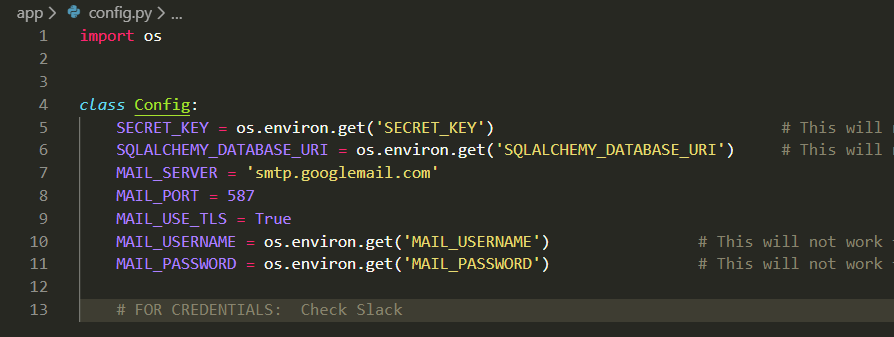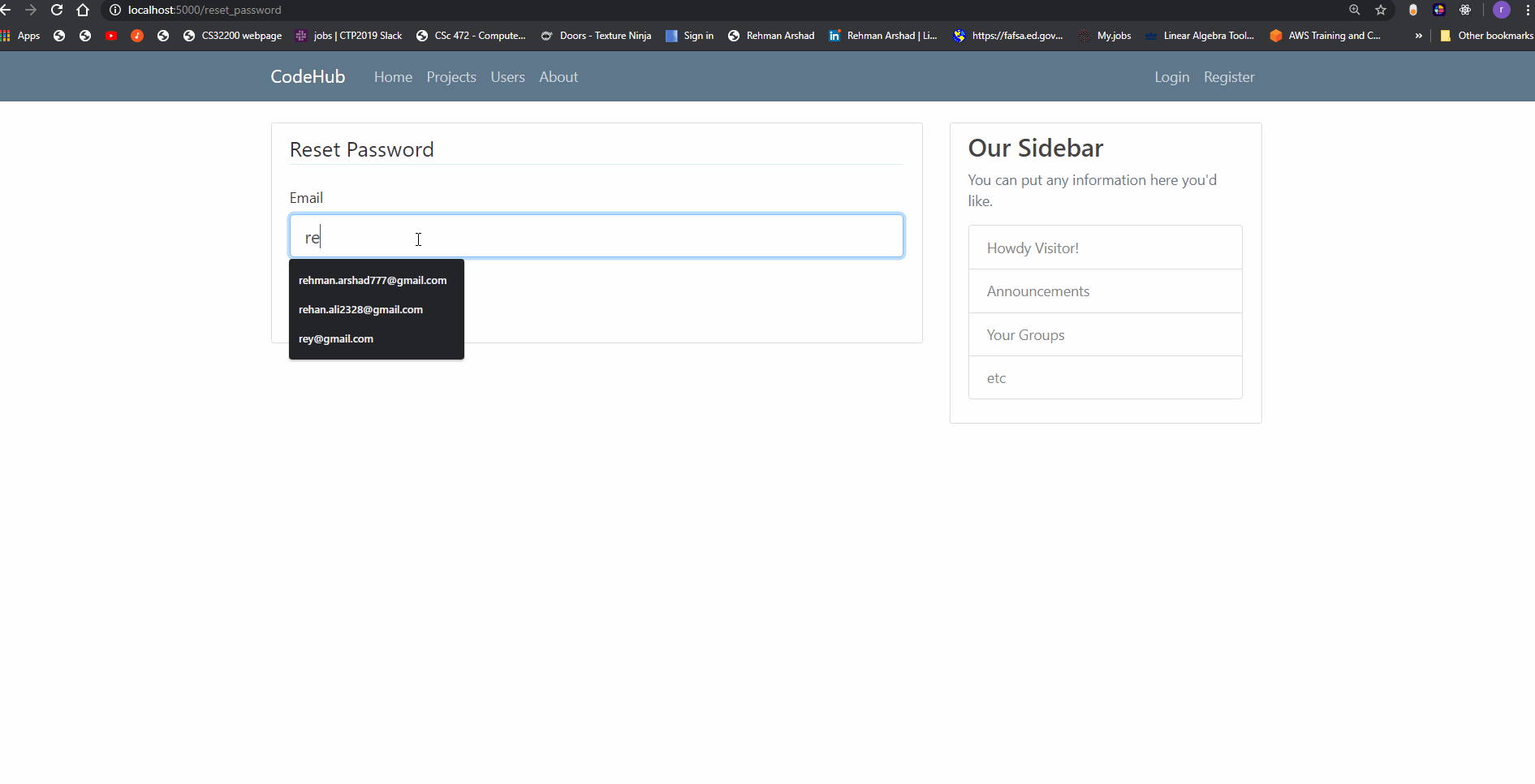CSC-32200-Software-Engineering Spring 2020 @ The City College of New York
- Rehman Arshad (RECEIVE ALL BONUS POINTS)
- Jorge Quiroz
- Moshe Oppenheim
- Neel
Okay listen up team! Read these instructions very carefully:
.
├── app
│ ├── blueprint_imports.txt
│ ├── config.py
│ ├── database.db
│ ├── errors
│ │ ├── handlers.py
│ │ └── __init__.py
│ ├── __init__.py
│ ├── main
│ │ ├── __init__.py
│ │ └── routes.py
│ ├── models.py
│ ├── posts
│ │ ├── forms.py
│ │ ├── __init__.py
│ │ └── routes.py
│ ├── static
│ │ ├── main.css
│ │ └── profile_images
│ │ ├── 53fa8c80cb8f07d2.jpg
│ │ ├── 73933dcf6ece5589.jpg
│ │ ├── a41e8879cea4dba5.png
│ │ ├── b169d1fe59e8b623.png
│ │ ├── b57c997a27cb7a5e.png
│ │ ├── b82418344831a769.jpg
│ │ ├── default.jpg
│ │ ├── e7abcd9c7d0f3682.jpg
│ │ ├── ed281b648c3e8981.jpg
│ │ └── edb7154b333427af.jpg
│ ├── templates
│ │ ├── about.html
│ │ ├── account.html
│ │ ├── create_post.html
│ │ ├── errors
│ │ │ ├── 403.html
│ │ │ ├── 404.html
│ │ │ └── 500.html
│ │ ├── home.html
│ │ ├── login.html
│ │ ├── post.html
│ │ ├── register.html
│ │ ├── reset_request.html
│ │ ├── reset_token.html
│ │ ├── template.html
│ │ └── user_posts.html
│ └── users
│ ├── forms.py
│ ├── __init__.py
│ ├── routes.py
│ └── utils.py
├── README.md
└── run.py
- Microsoft VSCode
Once you have VSCode installed and running, with the cloned repository folder open.
To open a terminal press (ctrl + ~) (tilda it's below the esc key).
- WSL Ubuntu -- bash
- Ubuntu Terminal Extension for VSCode.
To install the Ubuntu Terminal extension for VSCode: press (ctrl + shift + x) to get the extension store, and then search for Ubuntu, and click the green install button when prompted.
An issue with Ubuntu terminal is that you can't set this terminal as a default terminal VScode at the moment, the only way to open this terminal and create more instances of it is to press (ctrl + alt + u).
To clone this repository enter the following command:
$ git clone https://github.com/rehman000/CodeHub/
The following enviornmental variables are located in: CodeHub/app/config.py
- SQLALCHEMY_DATABASE_URI represents the url to an SQL database
- SECRET_KEY represents your secret key
- MAIL_USERNAME represents an email address
- MAIL_PASSWORD represents an email password
export SECRET_KEY="Todd_Howard_Strikes_Again"
export SQLALCHEMY_DATABASE_URI="sqlite:///database.db"
export MAIL_USERNAME="dummyEmail@gmail.com"
export MAIL_PASSWORD="dummyPassword"
But you will need to provide your actual Gmail email address, and an actual Gmail password, for convenience you can insert this on to the bottom of the .bash_profile file in WSL/Ubuntu, and then run the following command:
$ source .bash_profile
so that these changes take effect. Now that the enviornment variables have been set, all that's left is to install all the dependencies, and run the application.
- If that seems too complicated or confusing for testing purposes you can insert these values directly into config.py, However DO NOT COMMIT these changes, they have private information (such as your email address and password) that will be available as plain text in the git history for this public repository.
These enviornmental variables are neccessary for creating the database, and for the password reset functionality:
This allows your account to send automated emails with the password reset link!
$ pip3 install -r requirements.txt
Note if you get any error stating no module named "module name", you just need to install that dependency:
$ pip3 install "module name"
Now that we have everything set up properly to run the application enter the following command:
$ python3 run.py
The application will be running on: http://localhost:5000/


